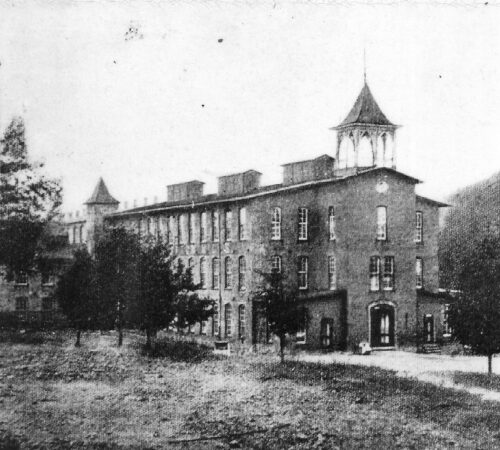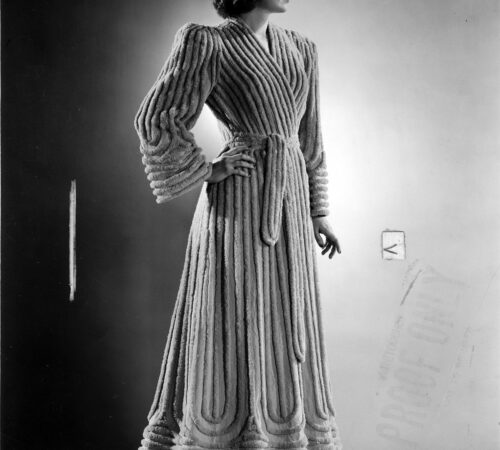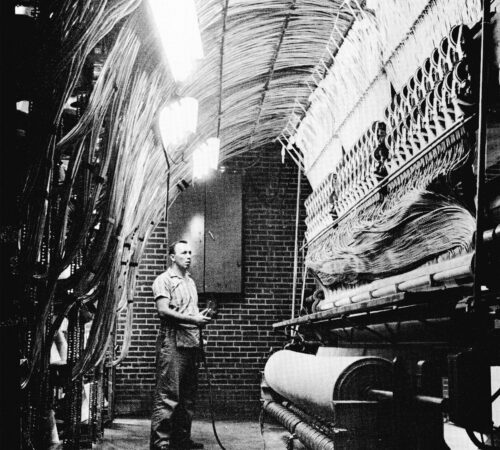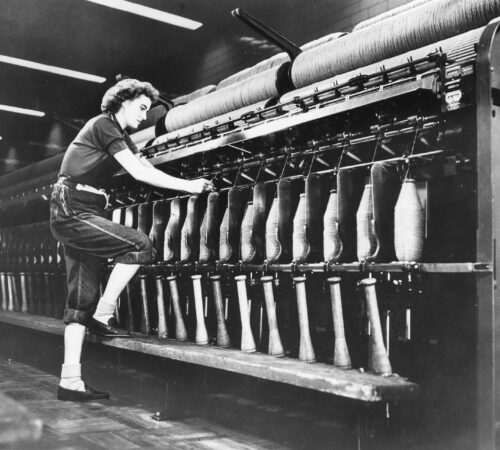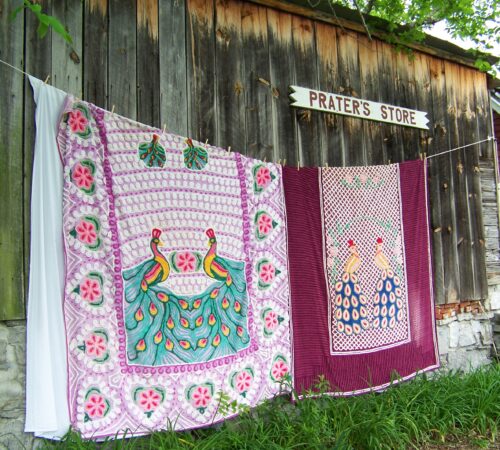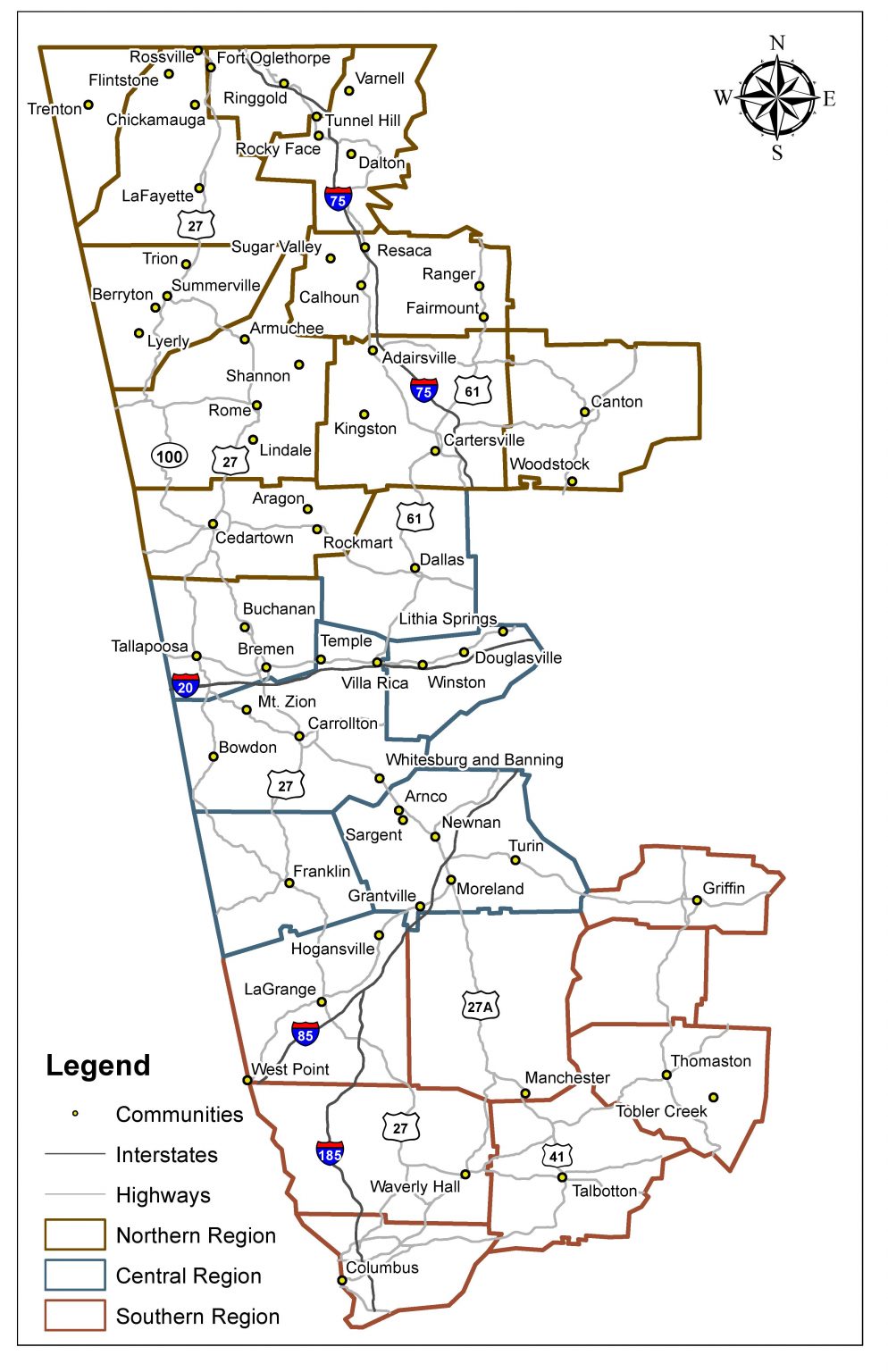Tufts of the Past
Exploring Dalton’s Textile History

*Images in brochure courtesy of Whitfield-Murray Historical Society
Tufts of the Past: The Dalton-Whitfield Spur
Sites to See Along the Trail:
[expand title=”1. Morgan Manufacturing Company: 3325 Chattanooga Rd. “]The last full-time vendor of chenille was located between Tunnel Hill and Rocky Face on Highway 41. The owner/operators were Willene & Jack Morgan.[/expand]
[expand title=”2. Colonial Craft #2: 3707 (or so) Chattanooga Rd.”]This structure was built by Elbert Putnam in the mid-to late 1950s. Putnam & his wife, Georgia Lee, built at least a dozen chenille businesses along Highway 41 in Whitfield County. Many were operated by family members.[/expand]
[expand title=”3. Crown Cotton Mill: 809 Chattanooga Ave.”]This mill began operations in 1884. today, through adaptive reuse, it houses condominiums and apartments.[/expand]
[expand title=”4. Crown Mill Store: 702 Chattanooga Ave.”]The Crown Mill Store, in conjunction with Crown Cotton Mill, allowed for mill employees to run a tab that was deducted from their pay.[/expand]
[expand title=”5. Crown Mill District Houses”]Turn left on Matilda St. beside the old Crown Mill store, and drive through the district. To accommodate the increasing number of workers moving to town from rural areas, the Crown Mill built homes in what is now thee Crown Historic District. Homes were rented to mill families, and the rent was deducted from their pay.[/expand]
[expand title=”6. Brooker Spread Co.: 105 Tyler St.”]This structure is now used as a storage facility.[/expand]
[expand title=”7. Roberts Machine Shop: 451 N. Hamilton St.”]This structure was one of many area shops that made, adapted, and repaired textile machinery.[/expand]
[expand title=”8. W & A Depot: 110 E. Depot St.”]This structure was built in 1852 and in use as a depot until 1978. The railroad was pivotal in shipping textiles from the area. Today, the depot is a restaurant.[/expand]
[expand title=”9. Cabin Crafts: 120 E. Morris St.”]Now occupied by Shaw Industries, this building is one of several that housed Cabin Crafts.[/expand]
[expand title=”10. Elk, later Boylston Crown Mill: 1029 S. Hamilton St.”]This building has housed a number of businesses and is now for sale.[/expand]
[expand title=”11. Old Boyston Crown School: 201 Bryant Ave.”]Now City of Refuge, this building used to serve the children of mill workers.[/expand]
[expand title=”12. Old Atcooga School: 1306 S. Thornton Ave.”]Now this building is the central office of the Whitfield Co. School. Phone: 706-278-8070[/expand]
[expand title=”13. Old Beckler’s Chenille: 3800 S. Dixie Road, SE.”]The first building constructed by Burch & Claudelle Beckler stood in front of this building and sold chenille products. This building, unlike its predecessor, was constructed with a concrete floor so a hyster could be used to move carpet. [/expand]
[expand title=”14. Putnam Chenille”]Just off Old Dixie Highway–still stands on Ben Putnam Rd., Dalton. Built by Elbert Putnam and operated by Bertie and Effie Collins, the structure is one of the few surviving “spread houses” that have survived. Many others have been torn down or vastly changed in appearance.[/expand]
Email the Trail at wgtht@westga.edu or call UWG Center for Public History at 678-839-6141 for more information.
